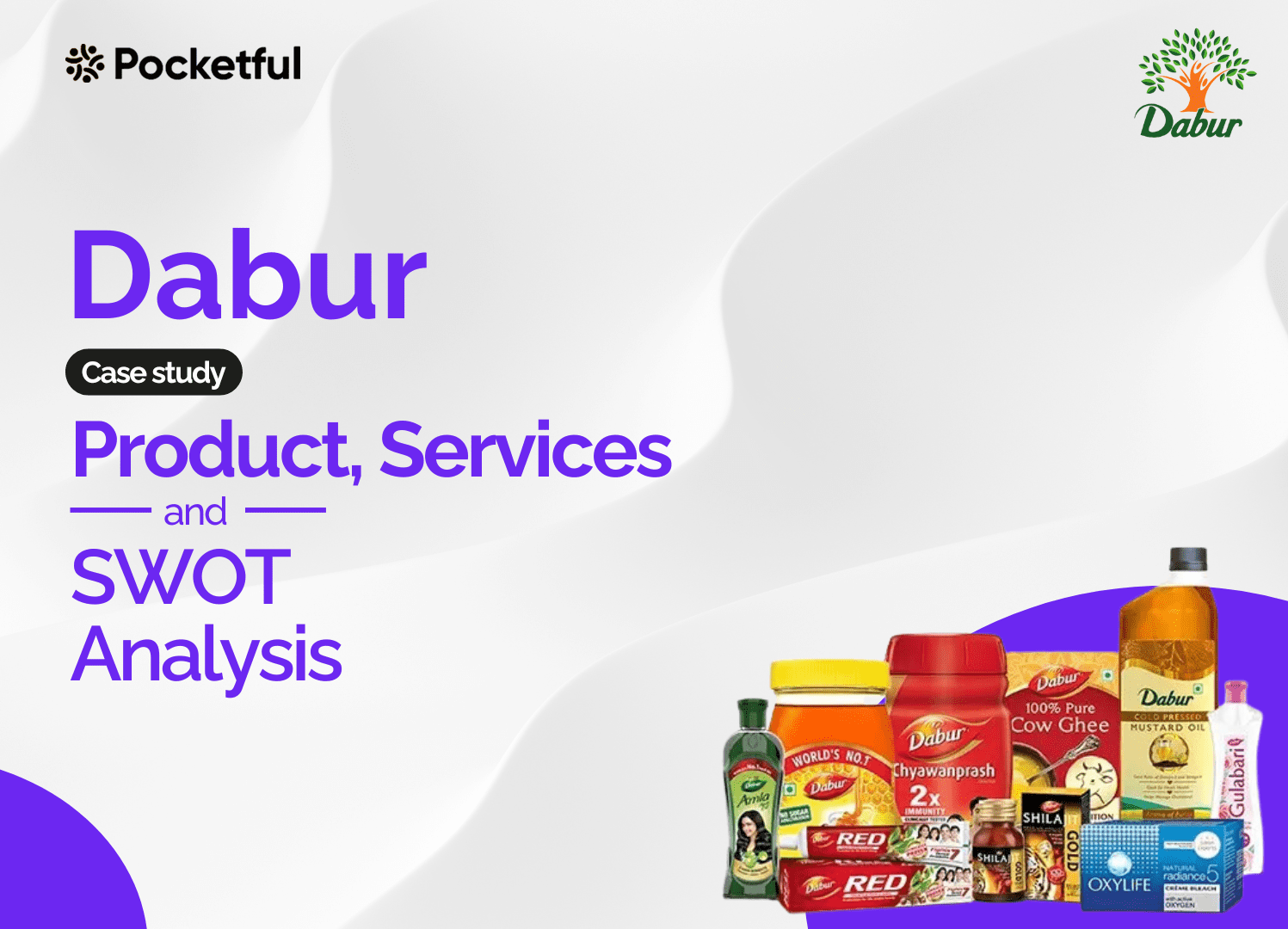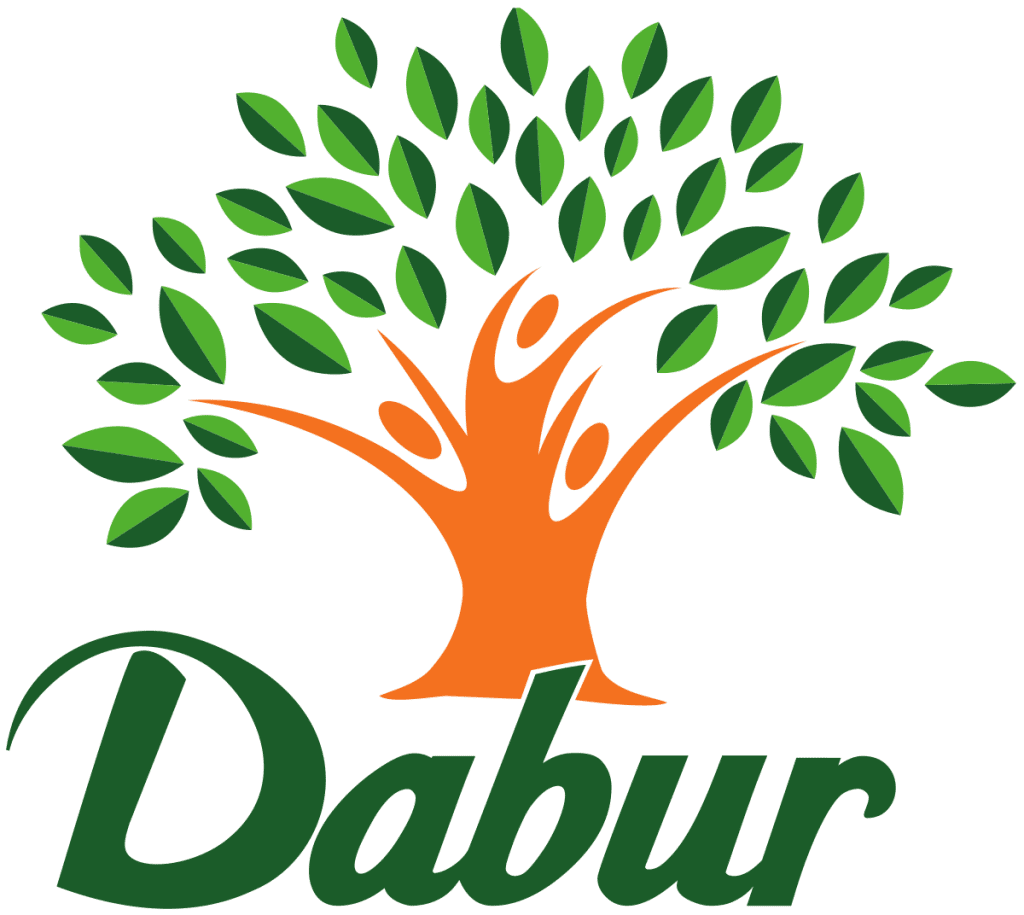| Type | Description | Contributor | Date |
|---|---|---|---|
| Post created | Pocketful Team | Jun-29-24 | |
| Update Content | Nisha | Mar-25-25 | |
| Added Case Study PDF & PPT | Ranjeet Kumar | Apr-16-25 |

- Blog
- dabur case study swot analysis
Dabur Case Study: Business Model and Swot Analysis


Download pdf
Download ppt
Dabur needs no introduction; it is one of India’s most trusted and famous household brands. Dabur is a 140-year-old Ayurvedic company that started operations in 1884 as an Ayurvedic medicines company. From its humble beginnings in the bylanes of Kolkata, Dabur India Ltd. has come a long way to become a consumer goods company with the world’s largest herbal and natural product portfolio.
In this Dabur case study and swot analysis blog, we will discover the fascinating story of Dabur India, its rich history, key strengths, business models, etc.
About Dabur India
Dabur has successfully transformed itself from being a family-run business into a professionally managed enterprise. Dabur India Ltd. is one of India’s leading FMCG companies, with revenues of over Rs. 12,886 crores & market capitalization of over Rs. 106,569 crores. Building on a legacy of quality and experience of over 140 years, Dabur is today India’s most trusted name and the world’s largest Ayurvedic and natural healthcare company.

Dabur India is also a world leader in Ayurveda, with a portfolio of over 250 Ayurvedic products. Dabur’s FMCG portfolio today includes nine distinct power brands in India.
Product Portfolio of Dabur India
- Health Supplements: Dabur Chyawanprash, Dabur Honey, Dabur Glucose
- Hair Care: Dabur Amla Hair Oil, Vatika Hair Oil, Almond Hair Oil
- Oral Care: Dabur Red Toothpaste, Meswak Toothpaste
- Skin & Personal Care: Gulabari Rose Water, Dabur Uveda Skincare
- Home Care: Odonil, Odomos, Sanifresh
- Food & Beverages: Real Fruit Juices, Hajmola, Lemoneez
- Digestives: Hajmola, Pudin Hara, Nature Care Isabgol
- Ethical & Ayurvedic Medicines: Various Ayurveda-based formulations
Dabur Business Model
Business strategy helps a company focus on immediate challenges and is aligned with its long-term vision. Dabur’s growth strategy is built on a foundation resting on four key pillars.
1. Modernising Ayurveda
By being known as the custodian of Ayurveda, Dabur has stayed true to its rich heritage and 140 years of quality and experience. Today, Dabur is the largest ‘science-based’ Ayurveda company globally. With the core belief in Ayurveda, Dabur has always invested in substantiating the usefulness of Ayurveda and Ayurvedic ingredients by making products through a series of scientific interventions for over a century. Dabur provides a unique platform by offering products that encapsulate the goodness of Ayurveda and are in sync with consumer preferences.
Dabur will continue focusing on the ‘herbal and natural’ proposition as the core philosophy in India and abroad. In addition, the emphasis on health and wellness is their USP, which makes Dabur a differentiated player in the consumer products market. Hence, they will continue to leverage this as a competitive advantage to increase their market share.
2. Power Brands
Brands are strategic assets, as these brands connect with consumers rationally and emotionally and deliver exceptional experiences.
Nine power brands together account for 70% of their total sales. These include eight brands in India and one in the overseas markets. Most power brands operate in the healthcare space, a category where Dabur has the natural right to win, given its 140-year heritage. The products offered align with the company’s vision of being dedicated to every household’s health and well-being.
3. Digital Transformation
Leveraging digital transformation to flare growth and innovation is not a new imperative for Dabur. Dabur is riding high on the digital revolution by pursuing an aggressive e-commerce and digital marketing strategy to tap the growing segment market size of millennials and Gen Z. To target the youth, they run specialized campaigns on various digital platforms and complement these with enhanced and easy availability of products on e-commerce and online marketplaces.
4. Rural Expansion
Rural markets in India have grown significantly, and these consumers are now more aware and conscious of their buying decisions and habits. The growing affluence in the hinterland and the deeper penetration of media and smartphones have led to a sizable jump in consumerism for branded consumer goods.
This market is one of Dabur’s key strategic focus areas. Rural India accounts for nearly 47% of Dabur’s domestic market sales, amongst the highest in the FMCG industry in India. At Dabur, they have been concentrating on increasing their direct reach to villages nationwide to tap into this growing consumer base. They have increased their distribution infrastructure, reaching around 1.3 million outlets and approximately 90,000 villages.
5. International Expansion
Dabur India Ltd. has strategically pursued international expansion to diversify revenue streams and strengthen its position in global FMCG markets. Initially serving the Indian diaspora in the Middle East, Dabur formalized its globalization drive in 2003 by establishing Dabur International Limited (DIL) in Dubai. As of 2024, the company has a global footprint in over 120 countries with 8 overseas manufacturing units, contributing 25% to total revenues. Region-wise split is mentioned in the table below:
| Region | Contribution to International Revenues |
|---|---|
| Middle East | 24% |
| Africa | 24% |
| Asia | 22% |
| Europe | 15% |
| Americas | 15% |
Recent performance indicates strong momentum: Dabur’s international business grew by 23.6% in Q2 FY24. Its business in Egypt and Turkey grew by 35% and 78% respectively. The overall business in the MENA region grew by 18.4%. Dabur is now investing in expanding manufacturing capabilities in the Middle East and Europe. This global expansion is driven by a threefold strategy: geographic growth, leveraging its herbal product portfolio, and scaling through both organic means and acquisitions.
Read Also: Colgate Palmolive India Case Study: Business Model, Product Portfolio, And SWOT Anlaysis
Case Study: Successful Marketing Campaigns
1. #BraveAndBeautiful
A social initiative celebrating cancer survivors, which deeply resonated with audiences and boosted Dabur’s brand reputation.
2. #VocalForLocal
A campaign promoting Indian-made products in response to the ‘Atmanirbhar Bharat’ movement, reinforcing Dabur’s homegrown identity.
3. Dabur Red Paste Challenge
A digital campaign leveraging social media influencers to highlight the effectiveness of Dabur’s oral care range.
Market Information of Dabur
| Current Market Price | ₹ 511 |
| Market Capitalization (in ₹ crores) | 90,521 |
| 52 Week High | ₹ 672 |
| 52 Week Low | ₹ 480 |
| Book Value | ₹ 58.5 |
| P/E Ratio | 51.2 |
| ROCE | 22.3% |
| Dividend Yield | 1.08% |
Dabur India Key Financial Statements
Dabur Income Statement
| Particulars | March 31, 2024 | March 31, 2023 | March 31, 2022 |
|---|---|---|---|
| Total Income | 12,886.4 | 11,975.3 | 11,281.9 |
| Total Expenses | 10,527.2 | 9,755 | 8,926.4 |
| Net Profit | 1,811.3 | 1,701.3 | 1,742.3 |
Dabur Balance Sheet
| Particulars | March 31, 2024 | March 31, 2023 | March 31, 2022 |
|---|---|---|---|
| Total Assets | 15,122.9 | 13,654.4 | 12,284.5 |
| Total Liabilities | 4,830 | 4,212.9 | 3,862.7 |
| Total Equity | 10,303.1 | 9,441.4 | 8,421.9 |
Dabur Cash Flow Statement
| Particulars | March 31, 2024 | March 31, 2023 | March 31, 2022 |
|---|---|---|---|
| Cash Flow from Operating Activities | 2,013.5 | 1,488.4 | 1,802.3 |
| Cash Flow from Investing Activities | -971.7 | -586.5 | -1,275.5 |
| Cash Flow from Financing Activities | -1,161.9 | -1,035.2 | -491 |
SWOT Analysis of Dabur
Dabur SWOT Analysis highlights its strengths in herbal products, opportunities in global expansion, weaknesses in dependency on rural markets, and threats from competition.
Strengths
- Market Share: Dabur India has an impressive market share within different segments like oral care (15.8%), beverages (19.8%) and hair care (18.9%).
- Economies of Scale: As it’s a big brand with economies of scale, it can compete at lower prices, and it would be difficult for its competitors to compete or fabricate its product at lower prices.
- Digital Marketing & E-Commerce presence: Dabur has an impressive e-commerce presence, helping it reach a wider consumer base.
- National Presence: Dabur is an Indian FMCG company that sells products based on Ayurveda. It has nearly 6.7 million retail outlets across India, and its portfolio includes eight brands in different sectors.
- Health Brand: Dabur successfully established itself as a healthcare brand. Its Ayurvedic preparations include health supplements, digestives and other OTC products.
Weaknesses
- Highly Competitive Industry: The FMCG industry is dynamic and highly competitive, with diverse consumer preferences and pricing strategies.
- Competition in International Markets: Dabur faced tough competition in international markets, especially in the toothpaste segment.
- Highly Regulated Market: Regulatory compliance is higher in Indian markets for FMCG companies.
- High Turnover Rate: Due to the frequent use and short shelf life of FMCG, the industry turnover rate is high. These goods are produced and manufactured in large quantities and sold in high volumes.
Opportunities
- Inelastic Demand: Usually, the demand for any product or industry is affected by various factors. However, the demand for FMCG is inelastic, i.e., changes in market conditions will have a minimal impact on demand.
- Strong Brand: Dabur has established itself as a strong brand, and people, even in rural areas, know it, making it a household name.
- Price Setters: Customers prefer choosing one product over another if they have brand loyalty. The sellers can also charge a marginally higher price and may become price setters to a certain extent.
- Ayurvedic Product Portfolio: Ayurvedic product demand is increasing in India & abroad.
- Focus on Health: Now, people focus more on healthcare products and brands, so Dabur is well placed in this segment.
Threats
- Monopolistic Competition: In monopolistic competition, there are many buyers and sellers. But they all do not sell homogeneous products. The products are similar, but all sellers sell slightly differentiated products. Hence, this sector is highly competitive.
- Big Portfolio: Dabur has a big portfolio and a wide product range. There is a threat of duplication from local brands that can make duplicate products and sell them under Dabur’s brand name.
Competitors of Dabur India
Read Also: Bikaji Foods Case Study – Product Portfolio, Financial Statements, & Swot Analysis
Conclusion
The company has a robust track record, making it a leading FMCG Company in India and the world’s largest Ayurvedic and natural healthcare company, with a portfolio of over 250 Herbal / Ayurvedic products. It maintains a clear vision for the future. However, competitors and regulations governing the FMCG industry present some challenges. As India grows and natural healthcare demand increases, Dabur is poised to play a significant role.
The company becomes a true winner against its competitors if it handles its challenges efficiently and takes advantage of future opportunities in a timely manner. Further, we recommend consulting with your financial advisor before making any investment decision.
Frequently Asked Questions (FAQs)
When did Dabur India start trading at NSE?
It started trading on November 3, 1994.
What type of market does Dabur India compete in?
It operates in a monopolistic market where many buyers and sellers compete with slightly differentiated products.
How many business segments does Dabur have?
It operates in three segments, namely 1) Home & Personal Care, 2) Health Care, and 3) Food & Beverages.
Who is the CEO of Dabur?
Mohit Malhotra is Dabur’s chief executive officer.
What makes Dabur Unique?
It blends traditional knowledge of Ayurveda with modern-day science and is famous for its natural ingredients.
Disclaimer
The securities, funds, and strategies discussed in this blog are provided for informational purposes only. They do not represent endorsements or recommendations. Investors should conduct their own research and seek professional advice before making any investment decisions.